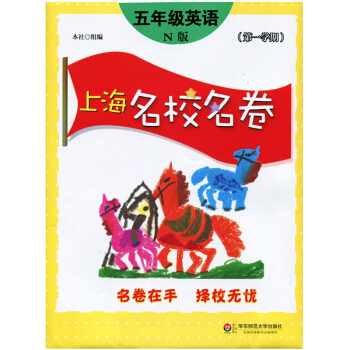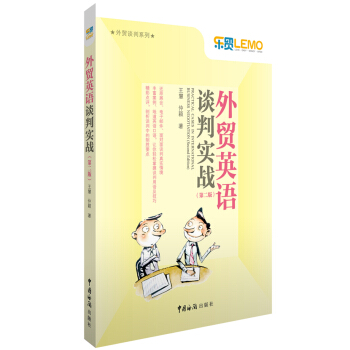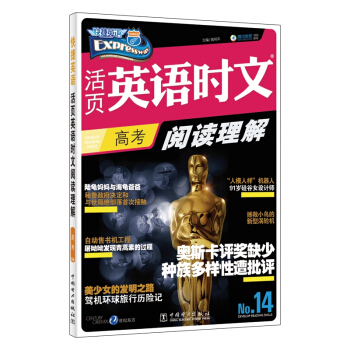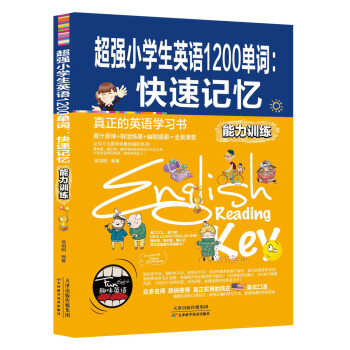

具体描述
编辑推荐
LADY CHATTERIJEY'S LOVER is a novel by D. H. Lawrencc, first published in 1928. Thefirst edition was printed in Florence, Italy; itcould not be published openly in the UnitcdKingdom until 1960. (A private edition wasissued by Inky Stephcnsen's Mandrake Pressin 1929).The story is said to have originated fromevents in Lawrence's own unhappy domesticlife, and he took inspiration for the settings ofthe book from Eastwood in Nottinghamshirewherc he lived for a while. According to somecritics, the fling of Lady Ottoline Morrcll with"Tiger", a young stonemason who camc tocarvc plinths for her garden statucs, alsoinfluenced the story.
内容简介
一战结束后,出身贵族的克利福德爵士带着伤残的身体回到庄园;妻子康妮是个健康貌美的知识女性,然而在长久的无性的沉闷生活中几乎无法忍受。就在这时,身材健壮然向^却有着“土包子”那种粗俗、鄙陋的外表的看林人却吸引了她。一股被压抑了太久的原始的生命力开始萌动,她一次次到林中小屋与之幽会,在此期间体会到爱情的美好,终于跨越世俗的陋见与隔阂,从而踏上新的人生旅途。
作为劳伦斯最后·部长篇小说,《查泰莱夫人的情人》包含了作者一生对性与情爱这一永恒母题的探索和总结,正如评论者所指出的,将身体视为人性良知的基本内核,仅仅是现代社会中的人们。
作者简介
D.H. LAWRFNCF, (1885-1930),one of the greatest figures in20th-century English literature.Lawrcncc saw sex and intuition asways to undistorted perception ofreality and mcans to respond tothe inhumanity of the industrialculture. From Lawrence'sdoctrines of scxual freedom aroseobscenity trials, which had a dccpeffect on the relationshipbctwccn literature and society.In 1912 he wrote: "What theblood feels, and believes, and says,is always true." Lawrcncc's Iifcafter World War I was markedwith continuous and restlesswandering.
内页插图
目录
INTRODUCTIONCHAPTER I
CHAPTER II
CHAPTER III
CHAPTER IV
CHAPTER V
CHAPTER VI
CHAPTER VII
CHAPTER VIII
CHAPTER IX
CHAPTER X
CHAPTER XI
CHAPTER XII
CHAPTER XIII
CHAPTER XIV
CHAPTER XV
CHAPTER XVI
CHAPTER XVII
CHAPTER XVIII
CHAPTER XIX
APPENDIX: MARKS ON LADY CHATTERLEY'S LOVER
精彩书摘
As Peter Gay states in the Introduction to his Freud Reader, "Freud is inescapable". This also holds true withD.H. Lawrence, who, although never fully accepted Freud,made use of Lus theories in order to work out his outlookon sexuality and his own "Exated, mystical irrationalism"(Gay, xxiii). More has been said about, against or in favorof Freud's theories than about any other 20th century topic,and to some extent, "it may be a commonplace by now thatwe all speak Freud whether we know it or not" (Gay, xiii). Unfortunately, and this is what we attempted to show inthis subchapter, popular readings and renderings of Freudhave somewhat diminished his importance as a scientistand stylist. The important thing is to avoid the imprecisediscourse deriving from this popularity and to exposeoneself fully and honestly to the body of his ideas, which canbe disconcerting and "sobering" (Gay, xiii) in the extreme.The original part of this section consists in our simultaneoustreatment of Freud as initial social and professional outsider,as pioneer, scientist and philosopher. Thereby we have triedto determine what exactly the basis of Freud's unprecedentedsocial and cultural impact was, and to lay the foundation ofour discussion of Lawrence's lughly personalized perceptionof psychoanalysis.The present section deals with D.H. Lawrence's highlyindividualized perception of the psychoanalytic doctrine,plaang special emphasis on the author's understandingof the unconscious as mirrored in his major essays. Anydiscussion of Lawrence's perception of the unconscioushas to start by drawing a clear dividing line'betweenFreud's understanding of the term and the view reflectedin Lawrence's works of fiction and non-fiction. Wlule Freudlocates the unconscious in the mind, Lawrence refuses todo so and places it'in the body, mores specifically in theplexes and ganglia, which he considers to be the superiorseat of consaousness. Actually, Lawrence associates neitherthe unconscious nor consaousness with the mind, as themind is corrupt and and can breed only repression andunfulfillment. Moreover, he comes up with a personal termto subst:itute Freud's unconsaous: he calls it the Holy Ghostand views it as the vital connection between the individualand the universal consciousness. For Lawrence, as for Freud,consciousness is not and cannot be unitary. Lawrence holdsthat man carries the divine spark of creation within him,and it is this spark that establishes the connection betweenindividual and universe. Whenever the mind comes in,however, the equilibrium is thwarted, personal and socialconflict being the result.
……
前言/序言
用户评价
语言的运用达到了近乎古典音乐的精炼与韵律感。这不是那种时下流行的直白、高效的句子结构,相反,它保留了某种时代特有的繁复和优雅,但绝非故作高深。每一个长句的内部结构都经过了精心的雕琢,从句与主句的衔接,如同乐章中的对位法,层层递进,直至抵达一个情感的高潮点。这种阅读体验是需要投入精力的,它要求读者放慢速度,细细品味那些被精心挑选的词汇所携带的重量和暗示。特别是当描写到人物之间那些微妙的、未言明的交流时,作者巧妙地运用了大量的间接表达和象征意象,使得那些真正重要的信息,不是被直接“说出”,而是被“暗示”给了懂得欣赏这种微妙的人。这让阅读过程本身变成了一种积极的参与,读者必须主动去解读那些潜藏在文字表层之下的深层含义,这种智力上的愉悦是极其满足的。
评分与其说这是一部小说,不如说它是一份对人性复杂性的精妙解剖报告。我特别欣赏作者在塑造配角时的用心良苦,他们并非仅仅是推动主角前进的工具人,每一个小角色都有其独立而完整的内在逻辑和行为动机。比如那个总是游走在边缘、观察着一切的旁观者,他的几句不经意的评论,往往能以一种近乎冷酷的清晰度,点破故事中那些被主角自己刻意忽略的真相。这种多重视角的呈现,极大地丰富了故事的层次感,避免了叙事落入单一的感性泥潭。它迫使读者跳出仅从主角的眼中看世界的局限,去审视权力、欲望、道德规范在特定社会结构下是如何相互倾轧、彼此塑造的。这种对“灰色地带”的坦诚描绘,让整部作品的思考深度远超一般的言情或社会写实范畴,它更像是一面镜子,映照出我们自身在面临相似困境时,内心深处那些不愿承认的挣扎与权衡。
评分这部作品初读时,其叙事节奏的把握着实令人赞叹。作者似乎深谙如何编织一张由日常琐碎与潜藏暗流构成的网,将人物置于一个看似平静实则暗潮涌动的环境中。开篇并不急于抛出惊天动地的事件,而是徐徐展开对生活细节的描摹,对人物内心细微波动的捕捉,这种克制的美学处理,反而使得后续情感的爆发更具张力和说服力。尤其是对特定场景氛围的渲染,无论是幽暗的室内光线,还是窗外若有似无的雨声,都精准地烘托出角色的心境。读者仿佛能一同呼吸着那个时代的空气,感受着衣料的触感和壁炉中木柴燃烧发出的噼啪声。这种浸入式的写作手法,极大地提升了阅读的沉浸感,让人在不知不觉中就被拖入了故事的漩涡,对接下来人物命运的好奇心被巧妙地吊起,即便偶有中断阅读,脑海中依然会回荡着那些未解的疑问和未竟的对话。整个前半部分的铺垫,为后续的冲突积蓄了强大的势能,体现出作者高超的叙事控制力。
评分从结构完整性来看,这本书的收尾处理得极为高明,堪称教科书级别。它没有采用那种大团圆式的完美落幕,也没有陷入无休止的悲剧循环。相反,结局是一种带着“悬而未决的完满”的状态。关键的冲突似乎得到了解决,但作者巧妙地留下了一些细小的线索,暗示着生活仍将继续,人物的内心世界依然在演变。这种收尾方式避免了故事的仓促结束感,反而赋予了作品一种悠长的回味空间。合上书本的那一刻,你感觉像是目送了一群熟悉的朋友走远,你期待着他们未来的发展,但你也明白,你对他们的观察就此告一段落。这种“刚刚好”的距离感,使得作品的生命力得以延伸,让人在很长一段时间内,还会时不时地翻开某个章节,重温那些最触动人心的瞬间。
评分这部作品在处理“禁忌”这一主题时,展现了一种令人耳目一新的成熟态度。它没有将复杂的情感关系简单地标签化或道德化,而是深入探讨了这些关系产生的社会、经济和心理根源。作者似乎在温柔地指出,在某些僵化的社会框架内,人性的需求往往会寻找最意想不到的出口。探讨的焦点更多地放在了“选择的代价”上,而非简单地谴责或颂扬这些选择。每一次情感的投入,都伴随着清晰可见的外部压力和内部的道德审视,这种双重的张力构成了故事紧张感的基石。观者能清晰地感受到,人物们并非是主动去打破规则,而是在既定的、近乎无法逃脱的困境中,为了寻求片刻的真实或慰藉而做出的本能反应。因此,读完后留下的不是道德上的审判,而是一种深刻的、对人类境况的同情和理解。
评分很轻很漂亮,很喜欢喜欢看
评分好书,书好,书中自有黄金屋
评分物流太快了。大出版社东西讲究。喜欢
评分人不是天生就明白很多东西,但是先人会给后人留下知识写在书上,人们通过读书对世界、对自己、对大自然有了更深刻的了解,然后在这个基础上继续探索,从而让人类更好的活着。
评分东西很不错,这次活动很优惠了,期待下次
评分书不错,正版,纸质也不错。
评分英文版看起来好累,要继续努力,纸张印刷很慢满意
评分里面译者写的方言有点看不懂啊~
评分很好,不错,喜欢,是本好书
相关图书
本站所有内容均为互联网搜索引擎提供的公开搜索信息,本站不存储任何数据与内容,任何内容与数据均与本站无关,如有需要请联系相关搜索引擎包括但不限于百度,google,bing,sogou 等
© 2025 book.coffeedeals.club All Rights Reserved. 静流书站 版权所有



![微软启示录:比尔·盖茨语录 [Impatient Optimist: Bill Gates in His Own Words] pdf epub mobi 电子书 下载](https://pic.windowsfront.com/11441068/rBEhWFNMolsIAAAAAA36tvHtW4cAAL0KgHYz2oADfrO354.jpg)





![意汉词典 [Dizionario Italiano-Cinese] pdf epub mobi 电子书 下载](https://pic.windowsfront.com/11756869/55ec014eN59face75.jpg)










